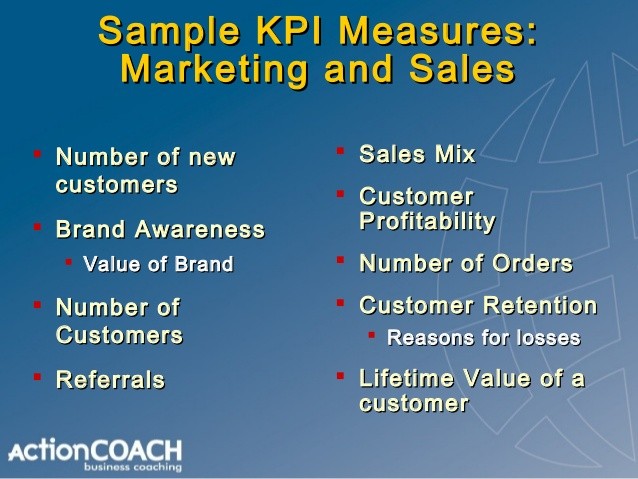3 Simple Ways to Measure the Return on Your Sales Ops Investment
Post on: 16 Март, 2015 No Comment

How does a sales organization justify an investment in sales operations? By proving the return on that investment in measurable terms. This article provides simple methods for measuring the return on your Sales Operations investment. Let us begin by examining the purpose of Sales Operations as a function.
At a high level, Sales Operations exists to bring insight and optimization to a sales organization driving continuous improvement in effectiveness and efficiency. The measurement of that continuous improvement can therefore be attributed to Sales Operations.
Sales effectiveness relates to the organization’s ability to achieve its targets. Such metrics may include % Effective to Total Revenue Targets or % of Sales Reps at Quota.
Sales efficiency relates to the organization’s ability to lower the cost of sales while achieving targets. Listed below are examples of metrics that indicate sales efficiency:
- Average Sales Price
- Average Sales Cycle (# of days it takes to close a deal)
- Close Ratio (% of qualified deals that close)
Let’s take a deeper look at these metrics and examine how to calculate your sales ops ROI.
Average Sale Price
Consider a simple example where you are selling products at an average of $20,000 per sale, with an annual target of $5,000,000. Now suppose that by investing in Sales Operations you can increase you average sale price by 5% to $21,000. That’s an annual revenue increase of $250,000. If your annual sales operations investment is $100,000 then you have a 150% return on your investment every year. That brings you to a total annual sales performance of $5,250,000.
The following sales ops activities may help to increase your average sale price:
- Providing training on how to sell value and how to negotiate.
- Creating an ROI calculator to estimate the value of the product to your prospects.
- Establish an approval policy for discounting sales.
- Compiling an easily accessible source of materials to prove value, such as case studies, surveys or testimonials.

Average Sales Cycle
Continuing with the example above, suppose your average sales cycle is 180 days. If effective Sales Operations can shorten that by 5% to 171 days, you should be able to close 5% more deals in a given year. That increases your overall sales performance from $5,250,000 to $5,512,500.
The following sales ops activities may help you shorten your average sales cycle:
- Establishing a content management system so reps can access materials needed through the sales cycle quickly and easily.
- Training your sales team to establish a plan with the prospect to ensure increased predictability and joint accountability to that plan.
- Optimizing internal processes to increase selling time vs. administration.
- Creating visibility into deals that have been ‘stuck’ in one stage of the sales cycle for more than 90 days (or any appropriate period) and addressing those deals directly.
Continuing further with our example, suppose that 30% of deals that enter your sales pipeline actually close. If you can improve that close ratio by 5% to 31.5% then you should again be able to close 5% more business in the year. That brings your overall sales performance to $5,788,125.
You can increase your close ratio with the following sales ops activities:
- Assess why deals are lost and addressing those areas directly. For example if deals are lost due to price, then you may want focused sales training on selling value and negotiations, or you may need to examine your pricing structure.
- Assessing from which stage in the sales cycle deals are being lost and focus sales training to address those areas directly. For example, if deals are being lost based on price early in the sales cycle, then it’s possible that reps are communicating price too early. Train them on how to navigate those discussions and the proper timing thereof.
- Working with your marketing department to define clear criteria for qualifying leads that enter the sales pipeline.
We can see that proving minor improvements to multiple measures can help you realize a compounded effect on your revenue increase. In this example improving 3 metrics by 5% has yielded a revenue increase of 15.8%, or $788,125. That a 688% return on your Sales Operations investment annually.
While these examples are highly simplified they demonstrate a method by which one can justify investment in the Sales Operations functions. The unique advantage to investing in Sales Operations is that it impacts your entire sales organization, not just one rep.
It is important to note that all of the above assumes you are able to capture these metrics. If you do not have an effective CRM system and processes to do so, then you definitely need a Sales Operations resource!
Once you have made your initial Sales Operations investment, it’s up to you to measure and prove the return on that investment. Having proven this value with measurable results your organization will have greater faith in Sales Operations, thus opening the door for more potential future investment.
The TRE3 Group helps companies optimize their sales operations organization, through best practices, processes, and tools. Visit www.tre3group.com to learn more about our sales ops solutions.














